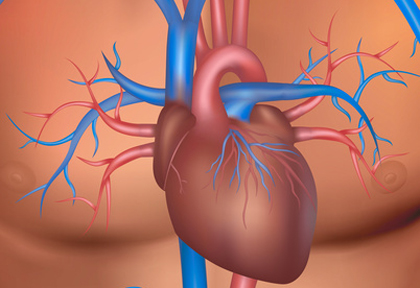Courtesy of Dr. Carlos Fava.
Asymptomatic severe aortic stenosis with preserved ventricular function is challenging. At present, it remains unclear whether we should operate or not and, according to some recent reports, neither do we know what patients will benefit from surgery.
 The study looked at 1678 patients with asymptomatic or minimally asymptomatic severe aortic stenosis. 1108 of these patients (66%) presented left ventricular ejection fraction (LVEF) >60%, 331 (20%) between 55% and 59%, and 239 (14%) <55%.
The study looked at 1678 patients with asymptomatic or minimally asymptomatic severe aortic stenosis. 1108 of these patients (66%) presented left ventricular ejection fraction (LVEF) >60%, 331 (20%) between 55% and 59%, and 239 (14%) <55%.
Mean age was 76, the group that presented LVEF <55% were mostly men and had high atrial fibrillation and infarction, larger ventricular diameters and volumes and lower gradient.
Read also: Asymptomatic Severe Aortic Stenosis in the Elderly: When to Intervene.
758 patients received medical treatment: 469 (62%) with LVEF >60%, 167 (22%) with LVEF between 55-59% and 122 (16%) with LVEF <55%. On the other hand, the remaining 920 patients received surgery within 3 months after the eco-Doppler: 639 (60%) with LVEF >60%, 164 (18%) with LVEF 55-59% and 117 (13%) with LVEF <55%.
Survival at 5 years was 72% for patients with LVEF >60%, 74% for patients with LVEF between 55-59% and 59% for LVEF <55% (p >0.001). After multivariable analysis, no differences were found for patients with LVEF >60% and 55-59%, but there was higher mortality among patients with LVEF <55%.
Read also: Safety in Abdominal Aortic Aneurysm Surveillance Programs.
This was observed both in patients receiving surgery and in patients receiving medical treatment. LVEF <55% was the cutoff value for mortality increase.
Conclusion
In patients with asymptomatic severe aortic stenosis and preserved ventricular function (or with minimal symptoms at the time of diagnosis) ventricular ejection fraction <55% is a marker of poor outcome, with medical management or surgery. Therefore, we suggest considering surgery before patients reach this stage.
Gentileza del Dr. Carlos Fava.
Original Title: Relationship Between Left Ventricular Ejection Fraction and Mortality in Asymptomatic and Minimally Symptomatic Patients with Severe Aortic Stenosis.
Reference: Yohann Bohbot, et al. J Am Coll Cardiol Img 2018 Article in Press
Get the latest scientific articles on interventional cardiologySubscribe to our weekly newsletter
We are interested in your opinion. Please, leave your comments, thoughts, questions, etc., below. They will be most welcome.





